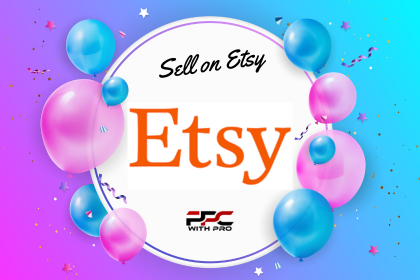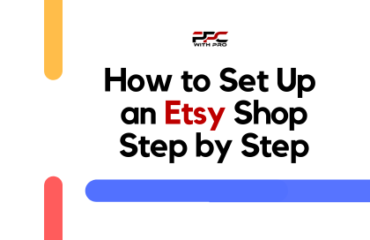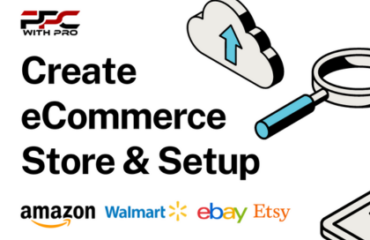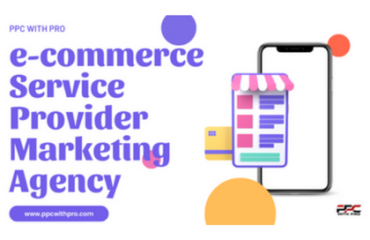
Etsy Seller Registration: A Step-by-Step Guide for Success
Are you an aspiring entrepreneur with creative skills and unique handmade products? Look no further than Etsy, the leading global marketplace for artisans and crafters. With millions of active buyers and a user-friendly platform, Etsy provides a fantastic opportunity for artists and creators to showcase and sell their products online. In this article, we will guide you through the process of Etsy seller registration, helping you kickstart your online business and reach a wider audience.
Table of Contents
- Introduction
- Why Choose Etsy as a Selling Platform?
- Creating an Etsy Account
- Setting Up Your Shop
- Optimizing Your Shop for Search Engines
- Crafting Compelling Product Listings
- Understanding Etsy Fees and Payments
- Managing Orders and Shipping
- Promoting Your Etsy Shop
- Leveraging Social Media for Marketing
- Handling Customer Feedback and Reviews
- Expanding Your Etsy Business
- Maintaining Success on Etsy
- Tips for Effective Time Management
- Conclusion
- FAQs
1. Introduction
In this digital age, online marketplaces have revolutionized the way we buy and sell products. Etsy, specifically designed for handmade, vintage, and unique items, has become a go-to platform for creative entrepreneurs. By registering as an Etsy seller, you gain access to a vast customer base, marketing tools, and a supportive community of like-minded individuals.
2. Why Choose Etsy as a Selling Platform?
Etsy offers several advantages that make it an attractive choice for sellers. Firstly, it provides a niche marketplace specifically tailored to handmade and vintage items, attracting a customer base interested in unique products. Additionally, Etsy offers built-in SEO features, making it easier for potential buyers to discover your products through search engines. The platform’s user-friendly interface and robust customer support further enhance the selling experience.
3. Creating an Etsy Account
To begin your journey as an Etsy seller, you need to create an account. Visit the Etsy website and click on the “Sell on Etsy” button. Follow the prompts to provide the necessary information, including your shop name, location, and payment preferences. It’s important to choose a memorable shop name that reflects your brand and resonates with your target audience.
4. Setting Up Your Shop
Once your Etsy account is created, it’s time to set up your shop. Customize your shop’s appearance by adding a unique banner, logo, and description that highlights your brand and the products you offer. Take high-quality photographs of your items, ensuring they are well-lit and showcase the details. Remember, visual appeal plays a significant role in attracting potential buyers.
5. Optimizing Your Shop for Search Engines
To increase your shop’s visibility and reach a broader audience, optimizing your shop for search engines is crucial. Conduct thorough keyword research to identify relevant search terms related to your products. Incorporate these keywords naturally into your shop’s title, descriptions, tags, and product listings. This will improve your shop’s search engine ranking and increase the likelihood of appearing in relevant search results.
6. Crafting Compelling Product Listings
When creating product listings, it’s essential to provide detailed and accurate information about your items. Write engaging descriptions that highlight the unique features and benefits of your products. Use clear and concise language, emphasizing the craftsmanship and quality. Include multiple high-resolution images from different angles to give potential buyers a comprehensive view of your products.
7. Understanding Etsy Fees and Payments
As an Etsy seller, it’s crucial to understand the fee structure and payment process. Etsy charges a listing fee for each product you add to your shop, along with a transaction fee for each sale. Familiarize yourself with these fees and set appropriate pricing for your items to ensure profitability. Etsy provides secure payment options for buyers, including credit cards, PayPal, and Etsy gift cards.
8. Managing Orders and Shipping
Once your shop is up and running, you’ll start receiving orders from customers. Efficiently managing orders and shipping is key to maintaining customer satisfaction. Keep track of incoming orders, process them promptly, and communicate with buyers regarding shipment details. Consider offering multiple shipping options to accommodate various customer preferences and locations.
9. Promoting Your Etsy Shop
To drive traffic to your Etsy shop and boost sales, actively promote your products both on and off the platform. Utilize Etsy’s built-in marketing tools, such as promoted listings and coupon codes, to attract potential buyers. Additionally, leverage social media platforms like Instagram, Facebook, and Pinterest to showcase your products, engage with your target audience, and redirect them to your Etsy shop.
10. Leveraging Social Media for Marketing
Social media platforms offer immense opportunities for marketing your Etsy shop. Create compelling content that showcases your products, behind-the-scenes glimpses, and customer testimonials. Engage with your followers by responding to comments, organizing contests, and collaborating with influencers in your niche. Remember, building a strong online presence and brand image plays a crucial role in attracting and retaining customers.
11. Handling Customer Feedback and Reviews
Customer feedback and reviews hold great value in the online marketplace. Encourage satisfied customers to leave positive reviews, as they act as social proof and build trust among potential buyers. Address any negative feedback promptly and professionally, showcasing your commitment to customer satisfaction. By actively managing customer interactions, you can establish a positive reputation and foster long-term customer relationships.
12. Expanding Your Etsy Business
As your Etsy business grows, you may consider expanding your product line or exploring new avenues for revenue generation. Continually innovate and experiment with new ideas while staying true to your brand’s identity. Consider collaborating with other Etsy sellers, participating in local craft fairs, or even opening a physical store if it aligns with your long-term goals.
13. Maintaining Success on Etsy
Success on Etsy requires continuous effort and adaptability. Stay updated with the latest marketplace trends and adjust your strategies accordingly. Regularly analyze your shop’s performance, review your product offerings, and make necessary improvements. Engage with your customers, provide exceptional service, and consistently deliver high-quality products to build a loyal customer base.
14. Tips for Effective Time Management
Managing an Etsy shop alongside other commitments can be challenging. To ensure efficient time management, create a schedule, and prioritize tasks. Dedicate specific time slots for product creation, order processing, customer communication, and marketing activities. Streamline your processes wherever possible and consider outsourcing certain tasks to free up your time for strategic business decisions.
15. Conclusion
Becoming an Etsy seller opens up a world of opportunities for creative entrepreneurs. By following the step-by-step guide provided in this article, you can navigate the Etsy seller registration process with ease and set yourself up for success. Remember to continuously refine your shop, adapt to changing market dynamics, and provide exceptional customer experiences. Embrace the power of Etsy’s global marketplace, and watch your business thrive.
FAQs – Etsy Seller Registration
1. Do I need to have a registered business to sell on Etsy?
No, you don’t need to have a registered business to sell on Etsy. You can start as an individual seller and upgrade to a business account later if needed.
2. How much does it cost to open an Etsy shop?
Opening an Etsy shop is free. However, Etsy charges a listing fee for each product and a transaction fee for each sale. It’s important to review and understand Etsy’s fee structure.
3. Can I sell digital products on Etsy?
Yes, you can sell digital products such as printables, digital art, and patterns on Etsy. Ensure that your digital products comply with Etsy’s policies and guidelines.
4. How long does it take to start making sales on Etsy?
The time it takes to make sales on Etsy varies depending on various factors, including the competitiveness of your niche, the quality of your products, and your marketing efforts. It’s important to be patient and consistent with your shop promotion.
5. Can I sell internationally on Etsy?
Yes, Etsy provides international selling opportunities. You can choose to ship your products worldwide or limit your shipping options to specific countries based on your preferences.
Create your Etsy Seller Account: Click Here
Contact Us: Click Here
In conclusion, Etsy seller registration is the gateway to a thriving online business for creative individuals. By leveraging the power of Etsy’s platform, optimizing your shop, and implementing effective marketing strategies, you can attract customers from around the world and turn your creative passion into a successful venture. So, take the first step today, register as an Etsy seller, and unleash your entrepreneurial spirit!



